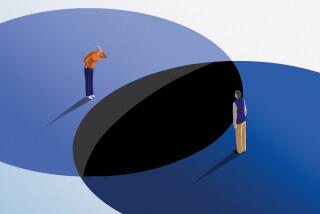Feynman’s Farewell : ‘WHAT DO YOU CARE WHAT OTHER PEOPLE THINK?’ : Further Adventures of a Curious Character <i> by Richard P. Feynman as told to Ralph Leighton (W. W. Norton: $17.95; 255 pp.) </i>
The announcement of Richard Feynman’s death in February startled many of us who had known the Nobel Laureate at Caltech, even as we acknowledged that the cancer that killed him could not be fended off indefinitely. He called himself “a curious character.” Certainly he achieved that status: self-created eccentric, would-be 20th-Century Leonardo, all-around genius with the added fillip of a sense of humor.
He was a great physicist who looked on nature afresh each day. The late Mark Kac, a gifted mathematician and a collaborator of Feynman’s, relates in his own autobiography how in one instance they solved the same mathematical puzzle in different ways. Kac recalls that he stood on the shoulders of an earlier thinker, while “Feynman, as in everything else he has done, stood on his own, a trick of intellectual contortion that he alone is capable of.”
He was an original. Whether painting, playing the bongo drums or analyzing the workings of NASA, he had an extraordinary lack of self-consciousness that both appalled and delighted those around him.
And then he was gone, mortal like the rest of us. We held our memorial service and said goodby. But now with the publication of “What Do You Care What Other People Think?,” a second volume of memoirs as told to his close friend, Ralph Leighton, we have another Feynman trick. It is as though the irrepressible maverick whom we had so often cheered on the stage in his frequent performances in student musicals, has returned from the wings to deliver one final monologue.
Kac also called him a “devious genius,” a description with which the chairman of the Challenger inquiry might concur. In this book, Feynman describes the deliberate naivete, the ploy of childlike ignorance, which often worked but occasionally failed him as a way of cutting through to the heart of any problem.
Though explicitly not intended as a follow-up to the enormously successful “Surely You’re Joking Mr. Feynman,” which hung on the best-seller list and made Feynman a synonym for physicist even before he played the enfant terrible at the Challenger hearings, these reminiscences present the cocky hero in greater depth.
“What Do You Care” is a gentler book, and for those interested in the man, a more substantial one. We shall probably never know the hereditary contribution to genius, but we learn a great deal of the way his loving parents nurtured his curiosity, created an atmosphere that encouraged questioning and original thinking, an environment that enabled his younger sister to become a physicist as well.
And we learn about Arlene, his first wife, which is a love story that makes Eric Segal’s fantasy seem shallow. They met as teen-agers and, before they had completed college, knew that she faced a terminal illness. Theymarried anyway, determined to be together in what time they had, and they moved to New Mexico and the Manhattan Project, he to Los Alamos where he helped create the first atomic bomb, she to a hospital in Albuquerque where, after a short time, he watched her die.
Love was apparently one of his talents. For in these recollections we encounter echoes of the feelings he had for his parents and Arlene in the letters that he later wrote to his wife and children.
The text is bifurcated into Neil Simonesque memories of a prewar adolescence in New York and a hard-edged account of the maverick physicist come to Washington. It is revealing to read Feynman’s recount how he arrived at the solution to the O-ring leak in explaining the shuttle disaster (which many of us remember from the screen as he displayed his elfin ingenuity before television cameras), and his later investigation of the lines of communication, which he exposes, very convincingly, as designed to limit individual creativity and even honesty.
In the material on the shuttle disaster we see the contrast between the individualist, the thinker who developed quantum electrodynamics and held a thousand people spellbound at Caltech while he explained the power of negative numbers, and the team mentality of large-technology.
Feynman’s voice reminds us that geniuses live among us who, aside from their special gifts, are much like the rest of us. He gives us hints on how to think, and some of them are no doubt useful. The book concludes with thoughts on the value of science, on the responsibility of scientists “to teach how doubt is not to be feared but welcomed and discussed; and to demand this freedom as our duty to all coming generations.” For, joking aside, this curious character felt that while scientists are no wiser than nonscientists at solving social problems, the tradition of openness inherent in scientific thought is essential to progress into the unknown. And looking thousands of years into the future, Feynman believed that the human race is just beginning its great adventure.
More to Read
Sign up for our Book Club newsletter
Get the latest news, events and more from the Los Angeles Times Book Club, and help us get L.A. reading and talking.
You may occasionally receive promotional content from the Los Angeles Times.






